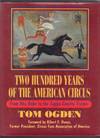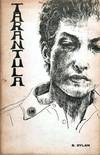
The Art Forger's Handbook
by Hebborn, Eric
- Used
- Good
- Condition
- Good/No Dust Jacket
- ISBN 10
- 1585676268
- ISBN 13
- 9781585676262
- Seller
-
Ventura, California, United States
Payment Methods Accepted
About This Item
Bergenfield, New Jersey, U.S.A.: Overlook Press / Reprint Book. Illus. by Some b/w Illustrations. Good. Art History / Reference. In good condition, some wear to edges, as normal for age. Library pocket in back, but otherwise clean. Overall good copy of this scarce title. Excellent read. A good book to enjoy and keep on hand. Or would make a great gift for the fan / reader in your life. About the author: Eric Hebborn was born in the London suburb of South Kensington to a Cockney family in 1934, although his mother was a gypsy. According to his autobiography, his mother beat him constantly as a child. At the age of eight, he states that he set fire to his school and was sent to Longmoor reformatory in Harold Wood, although his sister Rosemary disputes this.[citation needed] Teachers encouraged his painting talent and he became connected to the Maldon Art Club, where he first exhibited at the age of 15. Hebborn attended Chelmsford Art School and Walthamstow Art School before attending the Royal Academy. He flourished at the Academy, winning the Hacker Portrait prize and the Silver Award, and the Rome Scholarship in Engraving, a two year scholarship to the British School at Rome in 1959.[1] There he became part of the international art scene and formed acquaintances with many artists and art historians, including the British spy, Sir Anthony Blunt in 1960, who told Hebborn that a couple of his drawings looked like Poussins. This sowed the seeds of his forgery career. Hebborn returned to London where he was hired by art restorer George Aczel. During his employ he was instructed not only to restore paintings, but to alter them and improve them. George Aczel graduated him from restoring existing paintings to "restoring" paintings on entirely blank canvases so that they could be sold for more money. A falling out over Eric's knowledge of painting and restoration destroyed the relationship between Aczel and Hebborn. Eric and his lover Graham David Smith also frequented a junk and antique shop near Leicester Square, where Eric befriended one of the owners, Marie Gray. In organizing the prints catalogued in the shop Eric began to understand more about paper, and its history and uses in art. It was on some of these blank, but old, pieces of paper that Eric made his first forgeries. His first true forgeries were pencil drawings after Augustus John and were based on a drawing of a child by Andrea Schiavone. Graham Smith states [2] that several of these were sold to their landlord Mr Davis, several to Bond Street galleries and two or three through Christie's sale rooms. Eventually Hebborn decided to settle in Italy with Graham, and they founded a private gallery there. Life as a forger When contemporary critics did not seem to appreciate his own paintings, Hebborn began to copy the style of old masters such as: Corot, Castiglione, Mantegna, Van Dyck, Poussin, Ghisi, Tiepolo, Rubens, Jan Breughel and Piranesi. Art historians such as Sir John Pope Hennessy declared his paintings to be both authentic and stylistically brilliant and his paintings were sold for tens of thousands of pounds through art auction houses, including Christie's. According to Hebborn himself, he had sold thousands of fake paintings, drawings and sculptures. Most of the drawings Hebborn created were his own work, made to resemble the style of historical artists-and not slightly altered or combined copies of older work. In 1978 a curator at the National Gallery of Art in Washington DC, Konrad Oberhuber, was examining a pair of drawings he had purchased for the museum from Colnaghi an established and reputable old-master dealer in London, one by Savelli Sperandio and the other by Francesco del Cossa. Oberhuber noticed that two drawings had been executed on the same kind of paper. Oberhuber was taken aback by the similarities of the paper used in the two pieces and decided to alert his colleagues in the art world. Upon finding another fake "Cossa" at the Morgan Library, this one having passed through the hands of at least three experts, Oberhuber contacted Colnaghi, the source of all thre.
Synopsis
Includes bibliographical references (p. 191-193) and index.
Reviews
(Log in or Create an Account first!)
Details
- Bookseller
- Great Pacific Book Co.
(US)
- Bookseller's Inventory #
- 5034381-SW077
- Title
- The Art Forger's Handbook
- Author
- Hebborn, Eric
- Illustrator
- Some b/w Illustrations
- Book Condition
- Used - Good
- Jacket Condition
- No Dust Jacket
- Binding
- Paperback
- ISBN 10
- 1585676268
- ISBN 13
- 9781585676262
- Publisher
- Overlook Press / Reprint
- Place of Publication
- Bergenfield, New Jersey, U.S.A.
- This edition first published
- 2004-11-02
- Size
- Art History / Reference
- Keywords
- 2004 Eric Hebborn was born in the London suburb of South Kensington to a Cockney family in 1934, although his mother was a gypsy. According to his autobiography, his mother beat him constantly as a child. At the age of eight, he states that he set fire to
Terms of Sale
Great Pacific Book Co.
World Wide shipping, please call 805-643-8524 or email greatpacificbook@aol.com for quote. Conditional return policy offered.
About the Seller
Great Pacific Book Co.
Biblio member since 2003
Ventura, California
About Great Pacific Book Co.
Selling books online since 1994.
Glossary
Some terminology that may be used in this description includes:
- Reprint
- Any printing of a book which follows the original edition. By definition, a reprint is not a first edition.
- New
- A new book is a book previously not circulated to a buyer. Although a new book is typically free of any faults or defects, "new"...
- Edges
- The collective of the top, fore and bottom edges of the text block of the book, being that part of the edges of the pages of a...

